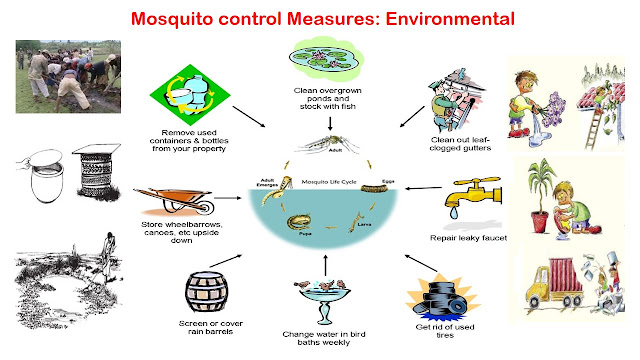Type 2 Diabetes: Extra attention required in the time of COVID-19
What is type 2 diabetes mellitus?
Type 2 diabetes/ mature onset diabetes/non-insulin dependent diabetes mellitus: It is a lifestyle disease, usually affects people over 40 years of age and it is the most common form of diabetes. It accounts for about 85–90% of all people with diabetes. It has a strong association with physical inactivity and being overweight. In this diabetes the body cells develop insulin resistance and does not respond to the insulin effectively and the pancreas also does not able to produce enough insulin needed for the body. Usually it tends to run in families.
What are the symptoms of type 2 diabetes mellitus?
The fact about type 2 diabetes is that it often has no symptoms and many people are unaware that they have a serious disorder. Around 50% of the people who do have this disease have not yet been diagnosed. Common symptoms are as follows
- Excessive Urination
- Increased frequency of urination
- Excessive thirst
- Excessive hunger
- Tiredness and lack of energy
- A tendency to get infections especially of the skin
- Slow healing wounds
- Mood swings
- Itching, especially of genitals.
Some people have minor symptoms which they ignore thinking it is due to other factors such as getting older.
How common is type 2 diabetes?
It is a very common disease that is rapidly increasing throughout the world. About 1 person out of 25 gets diabetes. It increases in older age because the pancreas, like other organs also tends to wear out.
Who are at risk of type 2 diabetes?
- People of age 55 years and above
- People of age 35 years and over who are Pacific Islanders, Aboriginal and Torres Strait Islanders, from the Indian subcontinent, Chinese or of Afro-Caribbean origin
- People aged 45 and over who are obese or overweight, have a first-degree relative with type 2 diabetes or have hypertension
- Women who have had gestational diabetes
- Overweight women with polycystic ovarian syndrome
- People with cardiovascular disease such as coronary disease and strokes
- People on long-term cortisone
What are the lifestyle risk factors?
- Sedentary lifestyle/low physical activity
- Overweight and obesity, especially of waist
- High blood pressure
- High blood cholesterol
- Cigarette smoking
- Unhealthy eating habits (e.g. refined sugar, high fat, fast foods)
- People at risk should have a blood glucose test organised by their doctor.
- There are several tests used by doctors, including a fasting blood glucose test and a special test called a glucose tolerance test, which measures the rise in blood glucose levels after a test drink of glucose.
How is type 2 diabetes managed?
Mainly through a disciplined lifestyle based on a proper balanced diet and physical activity. It is best to follow the NEAT rule of lifestyle:
- Nutrition: Have a diet with control of fat and carbohydrate intake. Keep to ideal weight and a normal blood sugar.
- Exercise: At least 30 minutes walking 5 or more days per week. Aerobics, swimming, tennis, other sports can also be considered.
- Avoidance: (or moderate intake) of toxic substances called as ‘CATS’, namely caffeine, alcohol, tobacco, sugar, sweets, salt, social drugs.
- Tranquillity: includes rest, recreation, stress management and activities like yoga.
- Medication: If diet and exercise are insufficient then medications should be taken as prescribed by doctor to control the blood glucose.
- Sometimes insulin may need to be added if not controlled by OHAs (Oral hypoglycemic agents).
- The aim is to maintain blood glucose within the normal range of 6.1 to 8.1 mmol/L before meals and 6.0 to 10.0 mmol/L two hours after meals. This will help to prevent complications.
- It is also important to keep weight, cholesterol and blood pressure within the recommended limits and look for any complications which may develop in eyes, kidneys, feet, nerves and heart.
Extra points to take care of type 2 diabetes during COVID-19 period?
When glycemic control is not good then people with diabetes may be at increased risk of aquiring COVID -19 infection due to low immunity. Hence ensure
- Achieve and maintain a good glycemic control
- FBS : less than 120 mg %
- PPBS : less than 180 mg %
- Should continue medications OHA /insulin in same doses if blood glucose under control
- If uncontrolled then dose/medication of OHA should be increased or shifted to insulin
- Should have nutritious and balanced diet plan for boosting immunity
- Practice Yoga and exercise at home
- Stop smoking and alcohol
- Have adequate sleep
- Take care of co-morbidities like hypertension, CAD, dislipidemia and continue medications without fail
- Call your doctor if not under control
- Be cautious about dehydration in hot weather and take adequate non -carbonated, non-alcoholic fluids
- Immediately report to covid screening OPD in nearest hospital if any symptoms like fever, cough, running nose, throat pain, breathlessness, abdominal pain, diarrhoea , vomiting develops
- Keep adequate stokes of medications (OHA /Insulin, drugs for co-morbidities), syringes, glucose monitoring strips and glucose powder for unexpected need in case of hypoglycemia
- All persons with diabetes should follow universal precautions like always wearing mask, physical distancing, frequent hand washing and maintaining personal hygiene.
References:
- John M. Murtaghs Patient Education. of 6th revised ed edition. North Ryde NSW: McGraw-Hill Australia. 2012
- Guidelines for management of diabetes mellitus during covid-19 pandemic, National health mission, Tamil nadu
- http://www.nrhmtn.gov.in/
- https://www.cdc.gov/diabetes/basics/type1.html
- https://www.nhs.uk/conditions/diabetes/
- https://www.diabetes.org.uk/about_us/news/coronavirus#affects
- https://www.niddk.nih.gov/health-information/diabetes
- https://www.niddk.nih.gov/health-information/diabetes/overview/what-is-diabetes
- https://www.who.int/health-topics/diabetes#tab=tab_3
- https://www.idf.org/aboutdiabetes/what-is-diabetes/covid-19-and-diabetes/1-covid-19-and-diabetes.html
- https://www.aafp.org/afp/1999/0501/p2507.html photo credit
- https://www.financialexpress.com/lifestyle/health/coronavirus photo credit
- https://stockfresh.com/image/1064821/planet-in-palms photo credit







Comments
Post a Comment